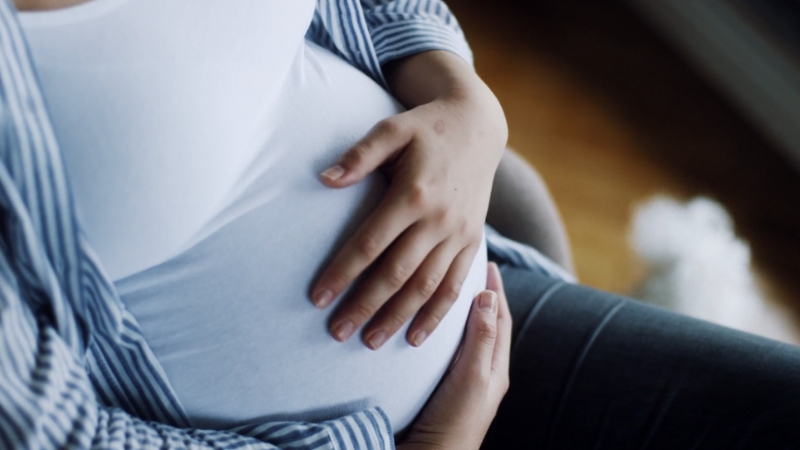Maternal mortality remains heartbreakingly high. In 2023 alone, around 260,000 women lost their lives during pregnancy or childbirth. The vast majority—about 92%—of these deaths happened in low- and lower-middle-income countries. What’s most tragic is that many of these deaths could have been prevented, according to WHO.
When we look at different regions, sub-Saharan Africa and southern Asia were the hardest hit, together accounting for about 87% of all maternal deaths that year. Sub-Saharan Africa alone made up roughly 70%—that’s 182,000 women—while southern Asia accounted for about 17%, or 43,000 deaths.
There is some good news, though. Between 2000 and 2023, some regions made remarkable progress. Eastern Europe saw a 75% drop in its maternal mortality ratio (MMR), going from 38 to just 9 deaths per 100,000 live births.
Southern Asia also made big strides, with a 71% decrease—from 405 to 117. Even sub-Saharan Africa, despite still having a high MMR, managed to reduce it by 40% over the same period.
In terms of the overall risk of dying from pregnancy-related causes over a woman’s lifetime, the biggest improvement came from central and southern Asia. There, the risk dropped by 83%—from 1 in 71 women in 2000 to just 1 in 410 in 2023.
Five regions saw their lifetime risk of maternal death cut by more than half: sub-Saharan Africa, northern Africa and western Asia, Australia and New Zealand, eastern and south-eastern Asia, and Oceania (excluding Australia and New Zealand).
Table of Contents
ToggleKey Takeaways
- 260,000 women died from pregnancy or childbirth in 2023—92% in low- and lower-middle-income countries.
- Sub-Saharan Africa and southern Asia accounted for 87% of all maternal deaths, with sub-Saharan Africa alone making up 70%.
- Most maternal deaths are preventable, with about 75% caused by bleeding, infection, high blood pressure, delivery issues, or unsafe abortion.
- Low-income countries have an MMR of 346 per 100,000 live births—34x higher than in high-income countries (10 per 100,000).
- The COVID-19 pandemic temporarily reversed progress, with a spike in maternal deaths in 2021, but levels declined again by 2022.
- To meet the SDG target of less than 70 maternal deaths per 100,000 births by 2030, the world must cut rates by nearly 15% annually—a rare and ambitious pace.
Statistics (2023)
Category
Value
MMR in low-income countries
346 per 100,000 live births
MMR in high-income countries
10 per 100,000 live births
Countries in conflict or fragility
37 countries
% of global maternal deaths (conflict/fragile)
61%
% of global live births (conflict/fragile)
25%
MMR in conflict-affected settings
504 per 100,000 live births
MMR in fragile (non-conflict) settings
368 per 100,000 live births
MMR in stable (non-conflict/fragile) settings
99 per 100,000 live births
Lifetime risk in low-income countries
1 in 66 women
Lifetime risk in high-income countries
1 in 7,933 women
Where women live has a huge impact on their chances of surviving pregnancy and childbirth. The reality is that far too many maternal deaths happen in places where access to quality healthcare is limited.
In 2023, the maternal mortality ratio (MMR) in low-income countries was shockingly high—346 deaths for every 100,000 live births, according to UNICEF reports. In comparison, high-income countries had an MMR of just 10 per 100,000.
The numbers are even more alarming in areas affected by conflict or institutional and social instability. In 2023, 37 countries were considered to be in conflict or fragile situations. Even though these countries only accounted for a quarter of all global births, they were responsible for 61% of maternal deaths.
NCBI notes that the MMR was highest in conflict zones, at 504 deaths per 100,000 live births. Fragile but non-conflict areas saw an MMR of 368, while more stable regions had a much lower rate of 99.
A woman’s lifetime risk of dying from pregnancy-related causes also shows the stark inequality. For a girl growing up in a low-income country, the chance of dying from a maternal cause is about 1 in 66. In high-income countries, it’s 1 in 7,933—a heartbreaking gap that speaks volumes about global health disparities.
Why Do Women Die from Pregnancy and Childbirth?
Many women lose their lives due to complications that arise during pregnancy, childbirth, or shortly after. In most cases, these complications are preventable or treatable—especially with timely and proper care. Some health issues may already exist before pregnancy and can become more dangerous if not managed as part of a woman’s care.
About 75% of all maternal deaths are caused by just a few key complications:
How Can We Save Women’s Lives?

Preventing maternal deaths starts with preventing unintended pregnancies. That means ensuring all women—including adolescents—have access to:
But that’s just the beginning. Most maternal deaths are avoidable because we already know how to prevent and treat the leading causes.
What’s needed is consistent access to high-quality care throughout pregnancy, childbirth, and the postnatal period, according to the World Health Organization.
Because maternal and newborn health is deeply connected, it’s crucial that:
Simple Solutions That Save Lives
- Severe bleeding after childbirth can kill within hours—but giving oxytocin right after delivery can dramatically reduce the risk.
- Infections can be prevented with good hygiene and treated early when symptoms first appear.
- Pre-eclampsia must be detected early and treated properly to avoid seizures and other complications. Magnesium sulfate is one key treatment that can help prevent eclampsia.
How Did the COVID-19 Pandemic Affect Maternal Mortality?
The COVID-19 pandemic had a noticeable impact on maternal mortality. In 2021, the number of maternal deaths rose to 322,000, up from 282,000 in 2020 as noted by UNICEF. This increase may have been driven by two key factors:
Fortunately, this setback was short-lived. By 2022, both the global maternal mortality ratio (MMR) and the total number of maternal deaths dropped to levels lower than those seen in the three years before the pandemic.
Maternal Mortality and the Sustainable Development Goals (SDGs)
We’re continuing to reflect on key takeaways from last year’s UNGA panel that inform how we can move toward achieving the UN’s Sustainable Development Goal (SDG) of reducing the global maternal mortality ratio. Read the article to learn more: https://t.co/RgK04eVk2x pic.twitter.com/MLXBIYT9FT
— MSD for Mothers (@MSDforMothers) March 20, 2024
As part of the Sustainable Development Goals, countries around the world have committed to ending preventable maternal deaths. One of the main targets under SDG 3 is to:
“Reduce the global maternal mortality ratio (MMR) to less than 70 per 100,000 live births, with no country exceeding twice the global average.”
As of 2023, the global MMR stood at 197 per 100,000 live births—still far from the target. Reaching the 2030 goal will require an ambitious annual reduction of nearly 15%, a pace that has rarely been achieved even at the national level.
Still, this goal is within reach. The knowledge, tools, and interventions to prevent most maternal deaths already exist. But as we approach 2030, it’s more important than ever to step up coordinated efforts at every level—global, national, regional, and community-based—to ensure that no woman dies from preventable causes related to pregnancy or childbirth.
Methodology
The article synthesizes data and statistics from 2023 published by trusted global sources such as WHO, UNICEF, and NCBI.
Content was rephrased and reorganized to improve clarity, readability, and flow while maintaining factual accuracy.
Information was grouped under thematic headers (e.g., causes, solutions, COVID-19 impact, SDG goals) for better structure and comprehension.
Tables and key figures were created or summarized to make complex data easier to digest and compare.
References:
- Trends in Maternal Mortality 2000 to 2023
- Maternal Mortality
- Maternal mortality: levels and trends
- Aid Cuts Threaten Fragile Progress Ending Maternal Deaths
- To achieve Sustainable Development Goal 3.1…








